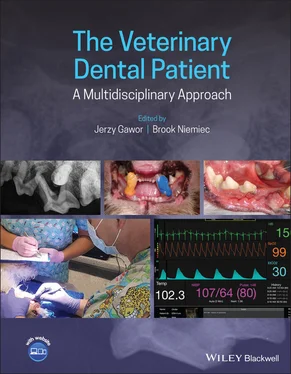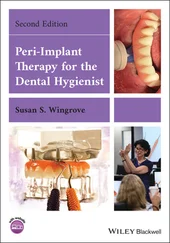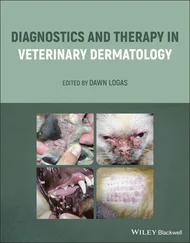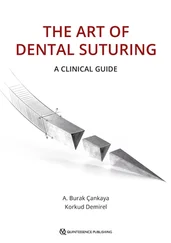This technician's responsibilities include:
patient history gathering
patient intake
performing oral examination
dental prophylaxis and cleaning procedures
charting
taking dental radiographs
assisting in oral surgeries and other dental procedures
recording information in the patient's medical record
delivering postoperative instructions
ensuring the dental operatory is stocked and the equipment is well maintained.
They should also be allowed to thoroughly discuss home care, client education, and follow‐up visits with pet owners.
The veterinary technician/nurse can help the veterinarian gather the information needed to determine a treatment plan. The veterinarian will use a combination of education and observation, comparing abnormal findings with normals (Niemiec 2010). The veterinary technician/nurse has responsibility for gathering the relevant dental information and obtaining an accurate overall health history. This allows the veterinarian to enter the exam room with an understanding of the oral condition and overall health of the patient and to work with the technician and client to prepare the best treatment options for them.
Some clients are educated and recognize that there is a problem with their pet's oral cavity, but the majority seem to be unaware when there may be a dental concern (Bellows 1999; Niemiec 2010; Perrone 2012). When a client suspects their pet has a problem, it is necessary to interview them to gather the needed information as well as to perform an oral exam of the pet. Veterinary professionals have to rely on information regarding the symptoms of the pet as it is provided by the owner (Perrone 2012). The most common symptom noticed by owners is malodor, but many owners (and veterinary professionals) think that halitosis is normal in pets. Occasionally, they may notice excessive salivation, inappetence, swelling, difficulty swallowing, or indications of oral pain or discomfort (Niemiec 2010; Perrone 2012). All these signs, along with the complete history including past oral examinations and treatments, diet, chewing habits, and home care, are pieces of a puzzle that must be put together (Perrone 2012).
Most commonly, owners are unaware that there is any problem with their pet's mouth. Dental issues may instead be discovered during the oral portion of an examination. The client may have noticed a change but not thought it important. This is the perfect time for the veterinary technician/nurse to educate them on oral disease and its importance to an animal’s overall health, as well as the typical lack of clinical signs.
The past history of the patient is valuable information that can assist the veterinarian in determining the treatment plan (Bellows 1999). Having a complete history of past oral examinations, extractions, and treatments helps the veterinarian understand the patient's present oral condition and predict the outcome of any procedure. Age is not the most significant factor determining the stage of periodontal disease: frequency of dental cleaning is more important. For example, a seven‐year‐old Yorkshire terrier that has not had any previous oral examinations or treatments is likely to have severe oral disease, while a similar patient that has had annual dental cleanings may only have a mild form ( Figure 4.7).
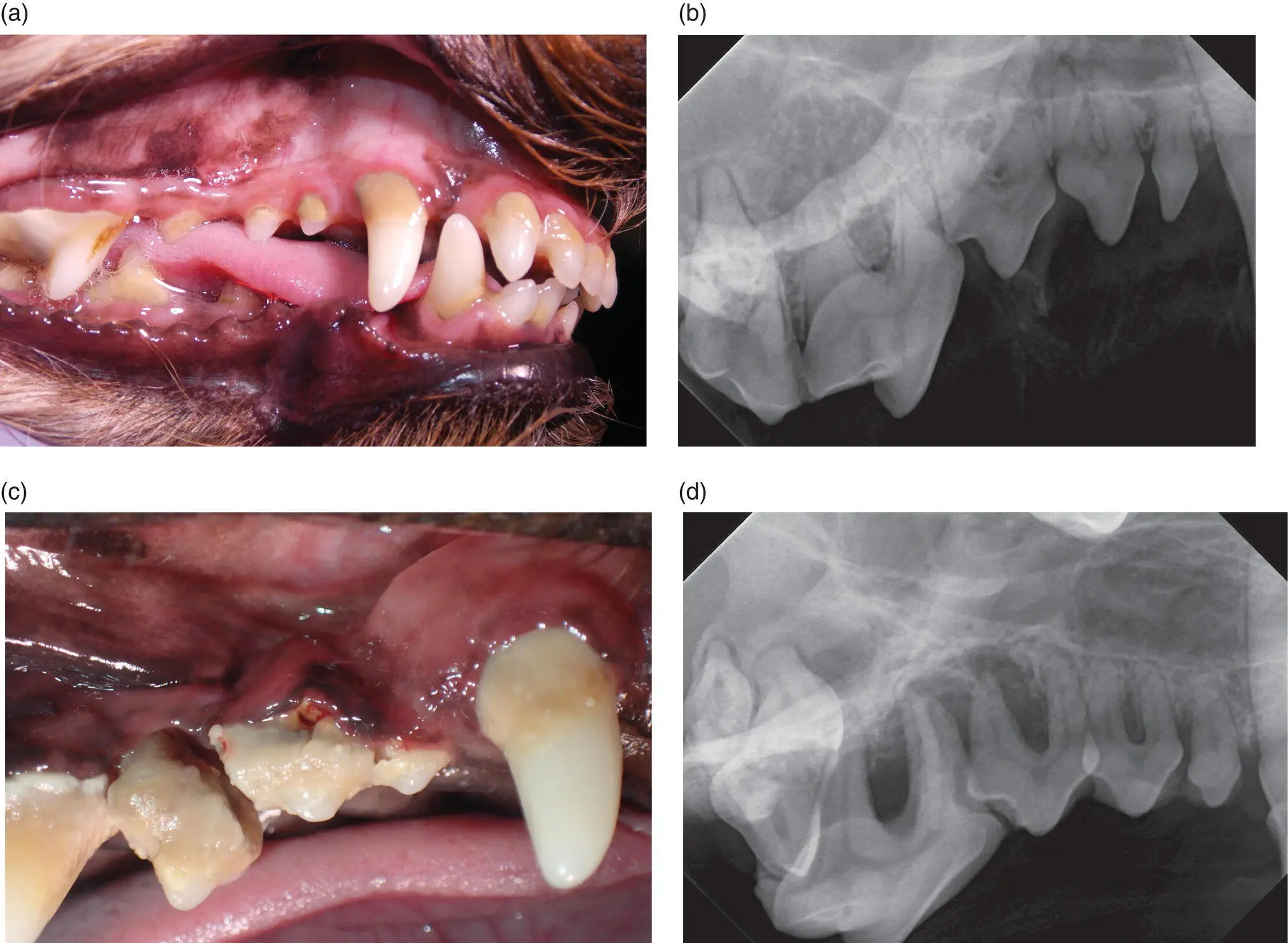
Figure 4.7 (a, b) Seven‐year‐old Yorkshire terrier that has received annual comprehensive oral health assessment and treatment (COHAT) all its life. (c, d) Seven‐year‐old Yorkshire terrier presenting for the first time.
The veterinary technician should ask many questions when interviewing the client about their pet's oral health. Open‐ended questions are best. If a client is not aware of any problems with their pet's oral cavity, they should be asked the following:
“Tell me about any previous dental work?” The client should be allowed time to volunteer information. If they respond with, “Yes, they had two teeth extracted at my previous veterinarian,” more direct questions can be asked regarding the cause of the extractions, when the procedure was performed, and so on.
“What are your pet’s chewing habits?” Some pets are very orally fixated, while others may not be chewers. Toys such as tennis balls, ice, cow hooves, pig ears, and hard nylon bones can cause serious trauma in the mouth (Bellows 1999). Clients may not realize the harm that could be caused by what they think is a great toy. This is an opportunity to educate them.
If the client is aware of a dental problem, ask them when they first noticed it. Again, many owners think that bad breath is normal and are not aware that periodontal disease is likely responsible for the malodor (Lobprise and Wiggs 2000).
The following questions should be asked in situations where the owner is concerned about a problem:
“What are your pet’s eating habits?”
“Does the patient seem to salivate excessively?”
“Does the patient appear to have problems drinking or swallowing?”
“Has there been a change in the patient's habits or behavior? Do they rub their face on the carpet or paw at their face?” Face rubbing, apart from being a common signalment of allergy, can also be a sign of oral pain or inflammation.
4.5.2 Oral Examination: The Conscious Patient
A general health exam must be performed by the veterinarian. The entire animal should be examined, nose to tail. A thorough exam should include the eyes, ears, skin, heart, lung, and abdomen. If anesthesia is planned, it is highly recommended to perform blood and urine analysis.
In a well‐managed practice (i.e. one that effectively utilizes lay staff), the veterinary technician/nurse can perform the initial oral examinations on both the conscious and the anesthetized patient and report their findings to the veterinarian ( Figure 4.8). The conscious exam is limited to olfactory, visual, and tactile examination.
Is the head symmetrical? Do both sides appear to be uniform or does one look different to the other? (Niemiec 2010) Is there swelling in any area of the mouth/head? If swelling appears below the eye, look for a fractured maxillary fourth premolar. Do the jaws appear symmetrical? If one side of the jaw is swollen or asymmetrical, rule out mandibular or tooth fractures, or oral masses.
Feel the head. Palpate the bones of the head, including the zygomatic arch and mandibles. Feel for the presence of abnormalities. Evaluate the lymph nodes, including the sublingual and submandibular nodes. Inflammation in the oral cavity can contribute to swelling of these nodes. The temporomandibular joint should also be palpated for indications of pain or discomfort.
A detailed oral exam should be performed prior to anesthesia, if possible. Check for occlusion, tooth fractures, gingival recession, and inflammation, as well as missing, supernumerary, or loose teeth. Count the teeth. This task can be difficult as not every patient is willing to allow a complete examination, especially if they are head shy or young. Each tooth should be evaluated for fractures, mobility, and the amount of plaque and calculus present.

Figure 4.8 Concious animal assessment.
While it is most important to evaluate the gingiva under general anesthesia when the gingival index and pocket depth can be evaluated, it is important too to observe the gingiva to determine a preliminary degree of periodontal inflammation. Healthy gingiva is pink with defined margins, while inflammation is indicated by red, swollen gums. Gingival recession or enlargement is a key element of periodontal disease and should be noted.
Читать дальше
